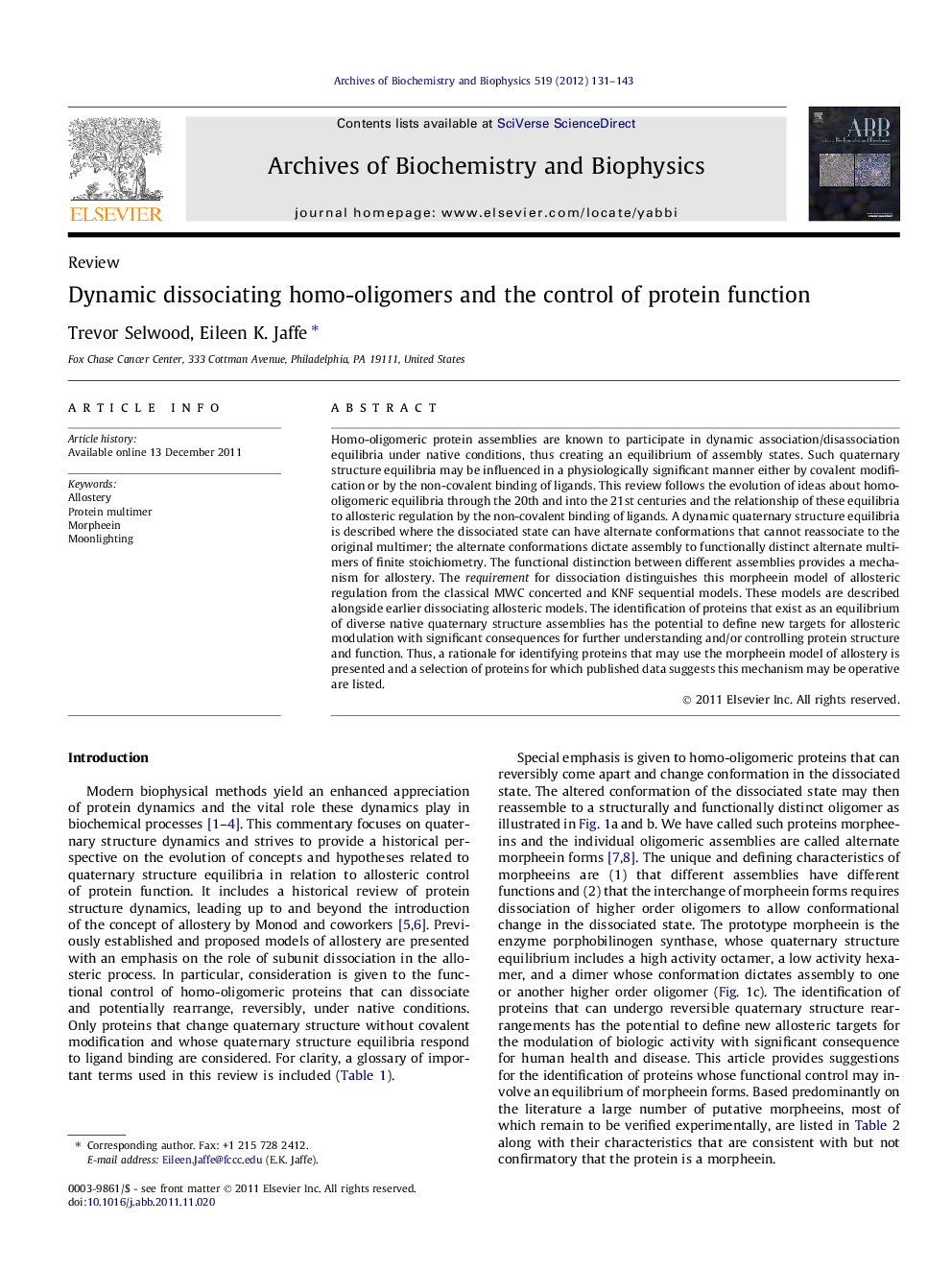| Article ID | Journal | Published Year | Pages | File Type |
|---|---|---|---|---|
| 1925605 | Archives of Biochemistry and Biophysics | 2012 | 13 Pages |
Homo-oligomeric protein assemblies are known to participate in dynamic association/disassociation equilibria under native conditions, thus creating an equilibrium of assembly states. Such quaternary structure equilibria may be influenced in a physiologically significant manner either by covalent modification or by the non-covalent binding of ligands. This review follows the evolution of ideas about homo-oligomeric equilibria through the 20th and into the 21st centuries and the relationship of these equilibria to allosteric regulation by the non-covalent binding of ligands. A dynamic quaternary structure equilibria is described where the dissociated state can have alternate conformations that cannot reassociate to the original multimer; the alternate conformations dictate assembly to functionally distinct alternate multimers of finite stoichiometry. The functional distinction between different assemblies provides a mechanism for allostery. The requirement for dissociation distinguishes this morpheein model of allosteric regulation from the classical MWC concerted and KNF sequential models. These models are described alongside earlier dissociating allosteric models. The identification of proteins that exist as an equilibrium of diverse native quaternary structure assemblies has the potential to define new targets for allosteric modulation with significant consequences for further understanding and/or controlling protein structure and function. Thus, a rationale for identifying proteins that may use the morpheein model of allostery is presented and a selection of proteins for which published data suggests this mechanism may be operative are listed.
Graphical abstractFigure optionsDownload full-size imageDownload high-quality image (181 K)Download as PowerPoint slideHighlights► A history of protein quaternary structure, dynamics and allostery is detailed. ► The history leads to the morpheein model of allostery. ► In the model alternate oligomers switch via conformational change while dissociated. ► Characteristics of morpheeins are described as an aid to identifying such proteins. ► Putative morpheein proteins are tabulated with their suggestive characteristics.
